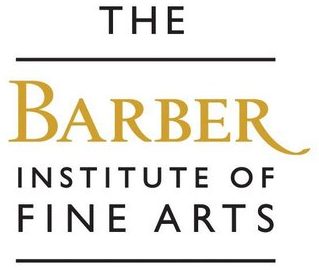Bells and Smells
In Solomon’s watercolour A Saint of the Eastern Church (1867–68), a haloed young man in a decorative tunicle, with dark hair and a deeply introspective gaze, carries a sprig of myrtle and a censer that emits fumes of incense. Two lamps are suspended from the ceiling by chains, which appear to be strung with little bells. With its suggestion of a remote and (to the Victorians) ‘exotic’ Eastern Orthodox setting, the image seems far removed from Victorian England. Yet this painting was made at a key moment within the long-running ‘bells and smells’ controversy over the increasing use of incense, bells, altar lights and other Roman Catholic liturgical (worship) practices in High Anglican churches. Given how contentious this was in Victorian society, the image could hardly have failed to evoke the Ritualist movement, despite its Eastern European setting suggested through its title.
Solomon was raised an Orthodox Jew but was drawn to ceremony and ritual across religions, ancient and modern. During the 1860s, he is thought to have attended services at St Alban’s Church in Holborn, London, where in 1867, the Reverend Mackonochie was charged for ‘censing things and persons’ as well as undertaking other acts of ritualism. In January 1869 a judge was to rule the ceremonial use of incense during Holy Communion illegal. The following year, the use of incense in preparation for Holy Communion was also ruled illegal, and in 1876, judges finally ruled incense-burning illegal in church processions.1
These laws reflected anti-Catholic hatred and tension that took root with the rise of Catholicism in Britain following the 1829 Catholic Emancipation Act and the re-establishment in 1850 of a Roman Catholic ecclesiastical hierarchy in England for the first time since the Reformation (1558-1603). Fears of Catholic infiltration into the Church of England were heightened by the mass immigration of Irish migrants to England in the 1850s.
During the Victorian period, it was widely understood that the theatre, costumes, ornamentation, and sheer sensuality of Roman Catholic and High Anglican church ritual held a hedonistic and even eroticized allure for some homosexual men, and that these churches provided a form of refuge.2 Given the intensity of the controversy over incense, and the perception of Catholic and High Anglican churches as a haven for illegal homosexuality, Solomon, himself homosexual, was fortunate to receive mostly positive reviews for A Saint of the Eastern Church, when it was exhibited at the Dudley Gallery in 1869.
With its dewy freshness, Fortescue-Brickdale’s watercolour, The Lover’s World (1901-05) is quite different from Solomon’s sensuous Aestheticism of the 1860s. Yet, in representing fairies swinging censers and bells hanging under branches, it too recalls the ‘bells and smells’ controversy that chimed on into the early twentieth century. Despite the Public Worship Regulation Act of 1874, ritualism had continued to flourish in London, prompting the archbishops of Canterbury and York, in a pronouncement of 1899, to reiterate the illegality of incense and processional lights in Anglican liturgy. By the turn of the century, more than four thousand English clergy belonged to the leading Anglo-Catholic ritualist society, and some aspects of Catholic liturgical practices were increasingly normative within the Anglican Church. In The Lover’s World, Fortescue-Brickdale suggests an alternative to the incense of church with what she described as a celebration of ‘Nature’s High Mass’.3 Her paintings exult in the beauty and mystery of nature and its rejuvenating spirit, pointing to the symbolism of ‘Natural Magic’ — the title of another of her watercolours exhibited in 1905.
Dr Christina Bradstreet
This text accompanies the exhibition Scent & the Art of the Pre-Raphaelites, The Barber Institute of Fine Arts, University of Birmingham, 11 October 2024 – 26 January 2025.
Endnotes
1. ‘In the Arches Court: Martin v Mackonochie’, The Law Reports (Admiralty and Ecclesiastical Cases), 28 March 1868, pp. 211–15; ‘The St Alban’s Case’, The Times, 28 January 28 1869, p. 12; and T. R. Stratford, ‘Urban Liturgy in the Church of England: A Historical, Theological and Anthropological Analysis of the Mid Victorian Slum Priest Ritualists and Their Legacy’, PhD diss., University of Sheffield, April 2008, p. 46.
2. E. Hanson, Decadence and Catholicism, Cambridge, Mass., 1998, p. 6.
3. See the catalogue text affixed to the back of the painting
